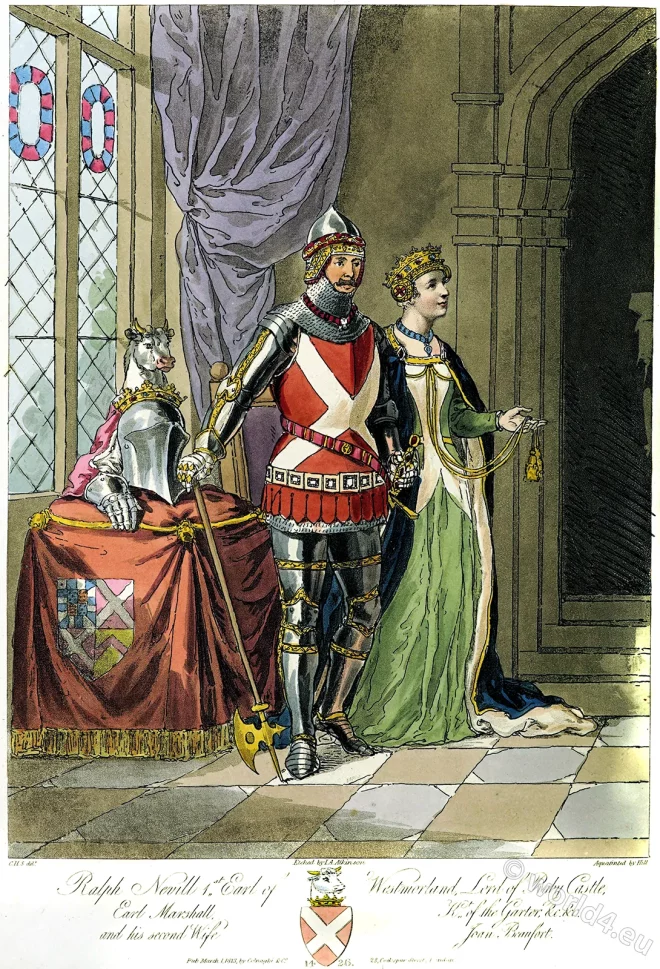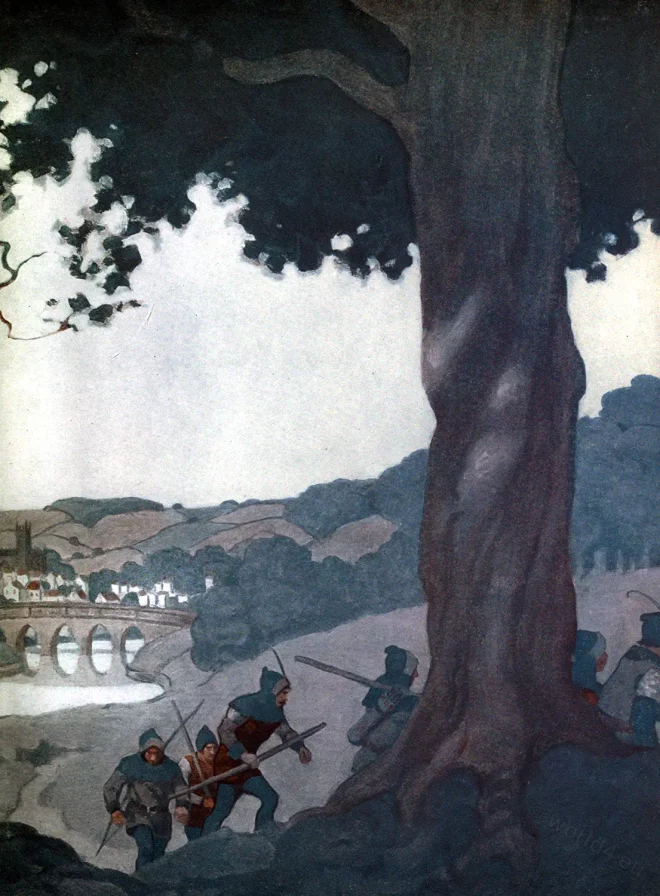Costume of the 15th century. Ralph Neville first Earl of Westmorland, 15th c. and his 2nd wife Joan Beaufort.
Tag: Medieval costume
Medieval costume history. The period between the end of antiquity and the beginning of modern times about the 6th to the 15th century. It includes as superordinate, the Byzantine, Merovingian, Carolingian and Burgundian costume eras. Therein are the Gallic, Celtic, English-Saxon, Normans, Gothic, Romanesque included.
Anglo-Saxon King his armour-Bearer equipped for battle.
Anglo-Saxon King his armour-Bearer equipped for battle. Anno 750
Episcopal costume. The Mitra Pretiosa of the 14th c.
Episcopal costume and insignia. The mitre, the cross, the superhumeral, the ring, the gloves, the shoes.
Aveline de Forz, Countess of Aumale. Reign of Henry III.
Aveline de Forz, Countess of Albemarle and Lady of Holderness was married to Edmund Crouchback, 1st Earl of Lancaster, the second son of Henry III of England
Anglo-Saxon women. Anno 750.
The Anglo-Saxon women were habited with simplicity, convenience, and elegance.
England. Jesters, or Fools of the 13th century.
Selections of the ancient costume of Great Britain and Ireland from the seventh to the sixteenth century, by Charles Hamilton Smith
Germany. Patricians in 14th century dress.
Münchener Bilderbogen 1848 to 1898. On the history of costumes.
Robin Hood of Sherwood Forest and his Adventures.
Robin Hood was born at Locksley, in the county of Nottingham, in the reign of King Henry II, and about the year of Christ 1160.
Margaret of Denmark, Queen of Scotland.
Margaret was the daughter of Christian I, King of Denmark and Dorothea of Brandenburg.
Norman knight (Varangian) in chain mail. 11th century.
Varangian reconstructed from the embroideries of the Bayeux Tapestry and contemporaneous original weapons.










